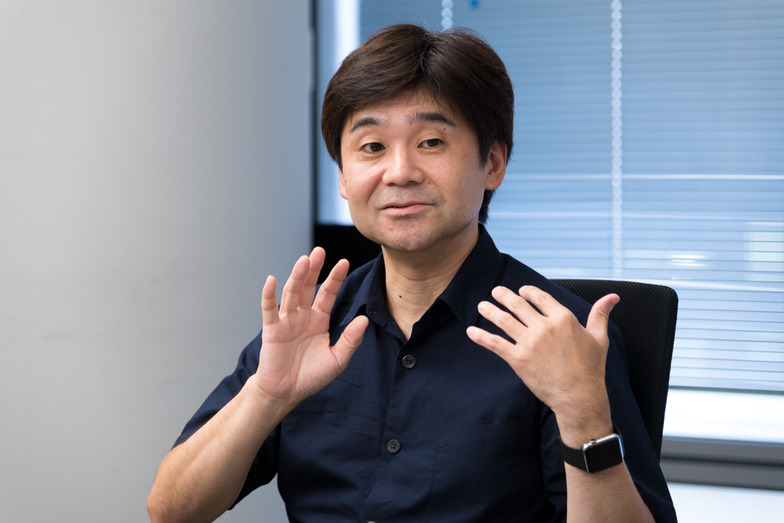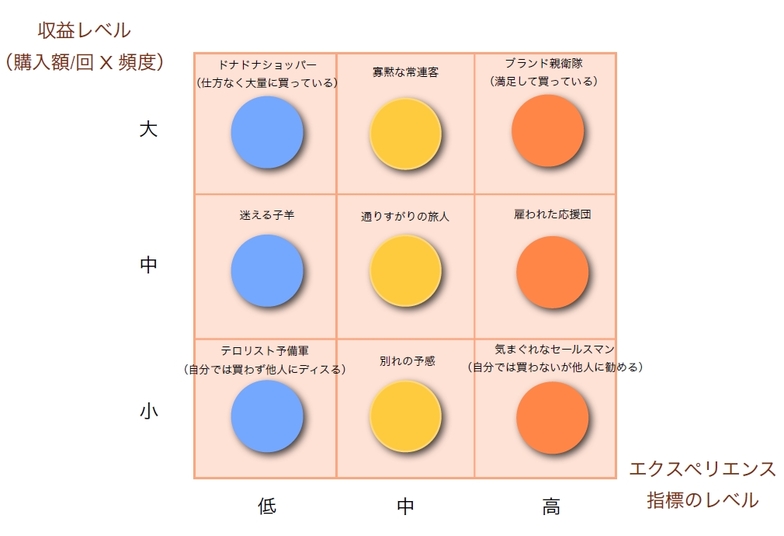UXmanagement is a challenge directly linked to business strategy
The theme of the third installment in this series is "UX Management." This time, we welcome Mr. Toshikazu Shinohara, President of Sociomedia and a world-renowned authority in the field of User Experience (UX). We will present this as a dialogue, learning from his insights. Mr. Shinohara founded the company in 2001 and primarily conducts research and consulting related to information design, usability, and the design of user behavior and information. He also contributes to understanding and promoting the UX field through supervising translations of specialized books and organizing seminars like the "UX Strategy Forum." My connection with Mr. Shinohara began through a seminar related to the book 'Measuring User Experience' (published by Tokyo Denki University Press), which I translated and published last year. Since then, we have co-presented at events and collaborated on some client projects.
In this interview, we delved deeply into how to practically implement UX, based on the core ideas that "UX directly impacts business strategy" and that "correctly measuring and managing UX is therefore essential."

From left: Mr . Toshikazu Shinohara ( SocioMedia ),Mr. Takashi Asaoka (Dentsu Inc.)
GoPro: EnhancingBrand Value Through Shared Experiences
Asaoka: The July 21st Nikkei newspaper featured a symbolic article for considering UX management. It was about Nicholas Woodman, founder of GoPro, the popular wearable video camera company. He was originally a surfer who attached existing cameras to his board to film himself surfing, then uploaded the videos to YouTube for fun. His desire to capture footage more easily and stylishly led him to start developing a compact video camera.
He states, "We don't sell products; we sell experiences." Today, GoPro's website has become a platform for video content. By transforming individual experiences into shared experiences within a user community, they enhance their brand value. GoPro went public last year, and what struck me as groundbreaking is that its founder and CEO remains deeply committed to creating this value.
Shinohara: That's fascinating. GoPro cameras are selling incredibly well worldwide now, right?
Asaoka: Yes, in the video camera market, they surpassed global competitors to achieve a 44.2% market share (2014 IDC survey). The value of user experience is directly driving sales. While more companies are now recognizing the importance of UX, you, Shinohara-san, were involved in UX design and consulting at a very early stage.
Shinohara: That's right. Our company's tagline is "User Experience Design Consulting." Since our founding, we've been engaged in what we now call UX design and consulting. I definitely feel that more companies are paying attention to UX now than back then. The trend toward user- or customer-centric product development and incorporating UX into business strategy is something I always hoped would come. For me, this signals that the truly important period is finally upon us.
UX Measurement and Metrics (Evaluation Indicators)
Asaoka: When companies adopt UX as part of their business strategy, they naturally need to measure and evaluate it correctly, establish an organizational structure capable of driving the PDCA cycle, and essentially think in terms of "managing UX." To unpack "UX Management," we've explored two key points: "Measuring UX and Metrics (Evaluation Indicators)" and "Building an Organization Centered on UX."
First, regarding the first point, "Measuring UX," could you tell us about its history?
Shinohara: The concept of measuring UX actually originated quite a long time ago. Jeff Sauro, a UX measurement expert I collaborate with, has compiled a detailed timeline on UX measurement. According to it, the earliest reference dates back to 1911. It traces back to the publication of Frederick Taylor's 'Principles of Scientific Management'. The book argued that to increase production efficiency, one must focus on and improve human motion, outlining methods to do so. This idea—that considering productivity fundamentally requires focusing on human actions—is considered the origin of UX.
Asaoka: Since productivity directly impacts sales, business strategy and UX have always had a high affinity.
Shinohara: Yes. When UI and UX began attracting renewed attention in recent years, they were often seen as something added on. But now, their move toward the core of business strategy can be seen as a return to their roots, in a sense.
Following several developments, Jakob Nielsen published 'Usability Engineering' in 1993. He posited that the 'usability' of products and services could be analyzed through engineering principles, seeking to clarify what specifically constitutes good or bad usability.
Asaoka: The Japanese edition was published in 1999, and you handled the translation, didn't you, Shinohara-san?
Shinohara: Yes. For me, that was a symbolic commitment to this field.
Taking it further, the next challenge became how to measure what each individual user is experiencing. This led to the 2008 publication of Measuring the User Experience by Tom Talis and Bill Albert. We also managed to publish the Japanese edition of this book last year. It's essentially a textbook on quantifying the experience itself.
NPS: A Metric Often Adopted forUX
Asaoka: Now, let's move on to discussing UX metrics—specifically, what evaluation indicators are used to measure UX. A well-known example is the "Net Promoter Score" (NPS), proposed by Frederic Reichheld in 1993 and published by Bain & Company and Satmetrix Systems in 2003. It asks, "How likely are you to recommend this company/product/service to others?" and is used as an indicator to measure customer loyalty.
In Japan, the term NPS is often used almost synonymously with recommendation intent, and it's widely recognized that strong recommendation intent frequently translates into economic impact. However, I personally feel things probably aren't quite that simple. Mr. Shinohara, based on your research encompassing other experience metrics, what are your thoughts?
Shinohara: Well, NPS is certainly one of several available methods. I believe its widespread adoption stems from being a single-question survey and its ease of data utilization.
The UX metrics summarized in the earlier book fall into five types. Briefly: ① "Performance metrics" that measure task completion time or success rates. ② "Issue-based metrics" that track the number, severity, and improvement of problems in products or services. ③ "Self-reported metrics" that gather users' actual opinions and impressions. NPS falls into this category. ④ "Behavioral/physiological metrics" that measure human actions or physiological responses like sweat or eye tracking. And ⑤ "Integrated/comparative metrics" that capture performance relative to objective surveys like brand studies or those published by various companies.
As Mr. Asaoka mentioned, NPS has high affinity with brands and is widely used. While it's certainly necessary to understand its correlation with other metrics, reviewing business plans we handle for clients reveals that NPS is increasingly featured prominently on the very first page. This positions NPS, a marketing metric, as a key indicator to focus on within management planning.

Asaoka: I believe the development and proliferation of social media is a key factor accelerating this trend. Customer evaluations and recommendations—for example, the number of "Likes" on Facebook—have become visible and quantifiable.
Shinohara: That's consistent. As with the GoPro example mentioned earlier, the emergence of social media itself has expanded the sharing of experiences. Consequently, the idea that "the stronger the desire to recommend something to others, the better the UX" aligns well with this trend.
The "9-Cell Analysis" PlottingNPSand Economic Impact
Asaoka: One key point to consider here is that if NPS is an intermediate indicator for direct economic effects like sales or churn rates, then what factors actually drive NPS? For example, does high satisfaction lead to recommendations, or is it understanding that matters? This likely varies by industry or a company's business model. Next, it's crucial to show the relationship between NPS and other metrics.
Shinohara: I agree. Simultaneously, I believe more research and practical application are needed on how to manage metrics—including those beyond NPS—over time and how to use them for competitive comparison.
Asaoka: As part of this effort, we presented the "9-Cell Analysis" at the Japan Marketing Association seminar in June, which I had the pleasure of co-presenting with Mr. Shinohara. We plotted loyalty (using NPS as the representative metric) on the horizontal axis and economic impact (revenue per customer) on the vertical axis. This divides the vertical sales axis and horizontal NPS axis into 3×3 = 9 cells. If a company has 100 customers overall, seeing what percentage falls into each cell reveals the state of the company or its products/services. The most desirable outcome is having many customers in the top-right cell, where both sales and NPS levels are high.
Shinohara: Visualizing this data makes it easier to establish a strategy for positioning UX within business strategy and how to improve it. I think it's effective both for identifying key issues and for considering differentiation from competitors.
Another aspect I really like about this analysis is how each cell uses catchphrases like "Brand Guardians" and "Lost Sheep" to personify the segments. It makes the personas very clear. You really are a creative company.
Asaoka: Thank you (laughs). By analyzing NPS drivers and further determining how much NPS needs to increase to see improvement in each cell's users and the resulting economic impact, you can set management goals and business targets based on that. This significantly enhances alignment between business strategy and marketing strategy, while also increasing transparency.
Shinohara: That's right. Furthermore, I believe the analysis can also provide insights into preventing people within these cells from deteriorating. Historically, Japanese users tended not to complain about negative experiences compared to users in Europe and America. However, recently, perhaps influenced by the culture of anonymity online, that tendency is changing. By tracking the percentage changes across the 9 cells over time, including these shifts, we can understand what's happening.
(Continued in Part 2 )
<As UX management becomes increasingly intertwined with business strategy, leading companies are beginning to accurately measure UX and embed it within their organizations. Part 2 will delve into the second key point: "Building Organizations Centered on UX.">










